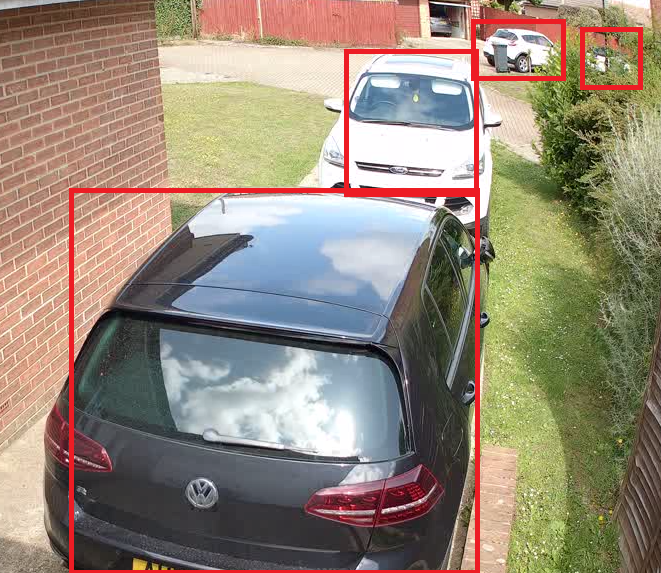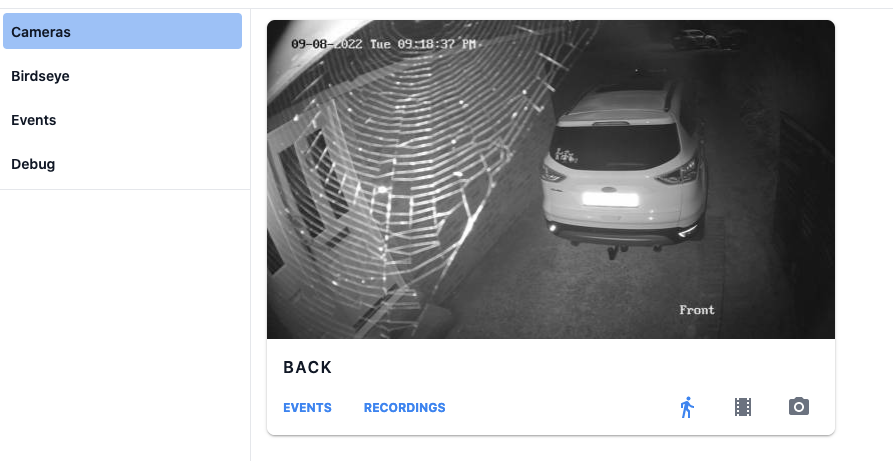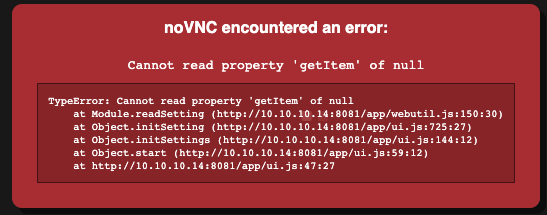
gareth_iowc
Members-
Posts
107 -
Joined
-
Last visited
Content Type
Profiles
Forums
Downloads
Store
Gallery
Bug Reports
Documentation
Landing
Everything posted by gareth_iowc
-
[Support] SpaceinvaderOne - Macinabox
gareth_iowc replied to SpaceInvaderOne's topic in Docker Containers
Did you run the vm setup script from the user scripts section? If so what was the output -
[Support] SpaceinvaderOne - Macinabox
gareth_iowc replied to SpaceInvaderOne's topic in Docker Containers
Anyone having what I assume is kernel panic issues? I have other Linux VM’s running without issue but after starting the big sur installer and it's been running for a while the sever crashes as requires a manual reboot. System remains stable until I start this install again -
I had an opportunity to move my server into a data centre that benefits me as I'm saving on electricity and the wife doesn't need to listen to the server anymore in the front room. I have a MikroTik CCR1036-8g-2s+ and a CCR1009-8G-1S connected using an EOIP tunnel and encrypted using IPsec. Both ends have a symmetrical 900 Mbps internet connection but due to the IPsec I can only push around 300mbps (full line speed with IPsec disabled) Rather than keep throwing money at routers, I'm thinking of running Mikrotik's cloud-hosted router VM on my unraid server and passing a 10 GB fibre card. I know the main security would come down to my router config inside the VM but would there be any other vulnerabilities? It feels a little scary plugging the internet directly into my server.
-
I'm not sure if it's part of the visual editor plugin i'm using but can the review process be disabled when edit a page?
-
Thanks, I have seen this document but I’m a bit confused on how it works. So by creating zones you can set alerts for only the driveway zone but what’s telling the system to ignore the car while parked?
-
I'm after some help getting frigate to decide when an car/object is stationary and ignore until it moves. The cars highlighted and almost always parked in the same place and i get loads of snap shots and recordings while they are stationary. I want to track the whole picture not just my driveway. My current config - mqtt: host: 10.10.50.8 topic_prefix: frigate client_id: frigate user: admin password: pass cameras: Driveway: ffmpeg: inputs: - path: rtsp://admin://[email protected]:554/Streaming/Channels/101 roles: - detect - rtmp - clips detect: # Optional: width of the frame for the input with the detect role (default: shown below) width: 3840 # Optional: height of the frame for the input with the detect role (default: shown below) height: 2160 # Optional: desired fps for your camera for the input with the detect role (default: shown below) # NOTE: Recommended value of 5. Ideally, try and reduce your FPS on the camera. fps: 5 # Optional: enables detection for the camera (default: True) # This value can be set via MQTT and will be updated in startup based on retained value enabled: True # Optional: Number of frames without a detection before frigate considers an object to be gone. (default: 5x the frame rate) max_disappeared: 25 # Optional: Configuration for stationary object tracking stationary: # Optional: Frequency for confirming stationary objects (default: shown below) # When set to 0, object detection will not confirm stationary objects until movement is detected. # If set to 10, object detection will run to confirm the object still exists on every 10th frame. interval: 0 # Optional: Number of frames without a position change for an object to be considered stationary (default: 10x the frame rate or 10s) threshold: 50 # Optional: Define a maximum number of frames for tracking a stationary object (default: not set, track forever) # This can help with false positives for objects that should only be stationary for a limited amount of time. # It can also be used to disable stationary object tracking. For example, you may want to set a value for person, but leave # car at the default. # WARNING: Setting these values overrides default behavior and disables stationary object tracking. # There are very few situations where you would want it disabled. It is NOT recommended to # copy these values from the example config into your config unless you know they are needed. max_frames: # Optional: Default for all object types (default: not set, track forever) default: 3000 # Optional: Object specific values objects: person: 1000 objects: # Optional: list of objects to track from labelmap.txt (default: shown below) track: - person - car - cat - dog - bird snapshots: # Optional: Enable writing jpg snapshot to /media/frigate/clips (default: shown below) # This value can be set via MQTT and will be updated in startup based on retained value enabled: true # Optional: print a timestamp on the snapshots (default: shown below) timestamp: False # Optional: draw bounding box on the snapshots (default: shown below) bounding_box: False # Optional: crop the snapshot (default: shown below) crop: False # Optional: Restrict snapshots to objects that entered any of the listed zones (default: no required zones) required_zones: [] # Optional: Camera override for retention settings (default: global values) retain: # Required: Default retention days (default: shown below) default: 10 # Optional: Per object retention days objects: person: 15 record: enabled: True retain: days: 5 mode: all events: retain: default: 5 mode: active_objects detectors: # Required: name of the detector coral: # Required: type of the detector # Valid values are 'edgetpu' (requires device property below) and 'cpu'. type: edgetpu # Optional: device name as defined here: https://coral.ai/docs/edgetpu/multiple-edgetpu/#using-the-tensorflow-lite-python-api device: usb I'm a bit confused on how to add the following config as it stops frigate from loading - Ref- https://docs.frigate.video/configuration/stationary_objects/ detect: stationary: interval: 0 threshold: 50
-
I'm trying to get the home assustant frigate plugin to work but it's not connecting Log Details (ERROR) This error originated from a custom integration. Logger: custom_components.frigate.api Source: custom_components/frigate/api.py:51 Integration: frigate (documentation, issues) First occurred: 17:24:59 (1 occurrences) Last logged: 17:24:59 Timeout error fetching information from http://10.10.10.14:5000/api/stats: The ip is reachable from home assistant - any ideas?
-
Thanks that worked I would like to review short videos clips of the events and have added clips: enabled: true retain: defualt: 15 but frigate wont start with that added mqtt: host: 10.10.50.8 cameras: back: ffmpeg: inputs: - path: rtsp://user:[email protected]:554/Streaming/Channels/101 roles: - detect - rtmp - clips objects: # Optional: list of objects to track from labelmap.txt (default: shown below) track: - person - car - cat - dog - bird snapshots: # Optional: Enable writing jpg snapshot to /media/frigate/clips (default: shown below) # This value can be set via MQTT and will be updated in startup based on retained value enabled: true # Optional: print a timestamp on the snapshots (default: shown below) timestamp: False # Optional: draw bounding box on the snapshots (default: shown below) bounding_box: False # Optional: crop the snapshot (default: shown below) crop: False # Optional: Restrict snapshots to objects that entered any of the listed zones (default: no required zones) required_zones: [] # Optional: Camera override for retention settings (default: global values) retain: # Required: Default retention days (default: shown below) default: 10 # Optional: Per object retention days objects: person: 15 clips: enabled: true retain: defualt: 15 # Optional: Detectors configuration. Defaults to a single CPU detector detectors: # Required: name of the detector coral: # Required: type of the detector # Valid values are 'edgetpu' (requires device property below) and 'cpu'. type: edgetpu # Optional: device name as defined here: https://coral.ai/docs/edgetpu/multiple-edgetpu/#using-the-tensorflow-lite-python-api device: usb
-
How do i get the show options button to enable bounding box etc? mqtt: host: 10.10.50.8 cameras: back: ffmpeg: inputs: - path: rtsp://user:[email protected]:554/Streaming/Channels/101 roles: - detect - rtmp # Optional: Detectors configuration. Defaults to a single CPU detector detectors: # Required: name of the detector coral: # Required: type of the detector # Valid values are 'edgetpu' (requires device property below) and 'cpu'. type: edgetpu # Optional: device name as defined here: https://coral.ai/docs/edgetpu/multiple-edgetpu/#using-the-tensorflow-lite-python-api device: usb
-
-
Can i choose a different different virtual network card for my windows vm? It's current using the default virtio card. I have an issue where anything inbound via the network over 40mbps brings causes the vm to slow down to the point of rgb not working on the keyboard and mouse lag. This issue has followed multiple versions of unraid and virtio drives. Changed motherboard and cpu from intel to amd and still have the issue. The array has been running as fully ssd for the past 3 years and it works great it's just the network issue that brings it to it's knees
-
[Support] spaceinvaderone - Shinobi Pro
gareth_iowc replied to SpaceInvaderOne's topic in Docker Containers
bugs attracted to the IR light of my camera trigger the motion recording all the time. can anyone recommend what setting i should be changing? -
-
My hp server has some on board storage that i would like unraid to ignore as it uses up drive availability in my licence "HP_iLO_LUN_00_Media_0_000002660A01-0:0 - 268 MB (sdb)" It's not been added to the array and sits in unassigned devices Can i get unraid to ignore this device?
-
Hi all, I'm very interested in controlling my fan speed depending on hard drive temperature. I have tired Dynamix Auto Fan Control but i can't detect anything on my board. Can anyone recommend a usb PWM controller that will be supported in unraid? Thanks
-
i have this same error when adding a second gfx card
-
have the same problem on 6.9.0-beta1
-
Hi all, So i have a problem with SMB shares been painfully slow - Across 3 windows computers the smb shares are lightening fast, but mac and linux they take an age to load. Any ideas?
-
Turns out not choosing a bios file allows the vm to start using the gfx card
-
I'm starting to think it has somthing to do with sea bios. If i chose the 970 as the main gfx card with seabios the vm won't boot. If i use ovmf i get a picture but the vm won't load as windows xp does not support UEFI
-
Hi All, Has anyone managed to get a gpu working with a windows xp vm? I have passed my gtx970 to the windows xp vm and installed drivers using guide - https://mattpilz.com/windows-xp-drivers-nvidia-geforce-gtx-970-980-980-ti-titan-x/ Now the drivers are installed windows xp can see the gfx card correctly but i get an error code 10. I am using vnc as my main card and gtx970 as the second. if i used the gtx970 as my main card the vm won't boot I am using the correct bios file for this GPU as i can start it with windows 10. My friend has attempted this with his own fresh install and using an XP supported GPU and has the same result. My XML. <?xml version='1.0' encoding='UTF-8'?> <domain type='kvm' id='9'> <name>Skill Ball Bingo</name> <uuid>96dafdcf-fdc8-3adb-4572-c37956567f16</uuid> <metadata> <vmtemplate xmlns="unraid" name="Windows XP" icon="windowsxp.png" os="windowsxp"/> </metadata> <memory unit='KiB'>1048576</memory> <currentMemory unit='KiB'>1048576</currentMemory> <memoryBacking> <nosharepages/> </memoryBacking> <vcpu placement='static'>4</vcpu> <cputune> <vcpupin vcpu='0' cpuset='0'/> <vcpupin vcpu='1' cpuset='6'/> <vcpupin vcpu='2' cpuset='1'/> <vcpupin vcpu='3' cpuset='7'/> </cputune> <resource> <partition>/machine</partition> </resource> <os> <type arch='x86_64' machine='pc-i440fx-4.2'>hvm</type> </os> <features> <acpi/> <apic/> <hyperv> <relaxed state='on'/> <vapic state='on'/> <spinlocks state='on' retries='8191'/> <vendor_id state='on' value='none'/> </hyperv> </features> <cpu mode='host-passthrough' check='none'> <topology sockets='1' cores='2' threads='2'/> <cache mode='passthrough'/> <feature policy='require' name='topoext'/> </cpu> <clock offset='localtime'> <timer name='hypervclock' present='yes'/> <timer name='hpet' present='no'/> </clock> <on_poweroff>destroy</on_poweroff> <on_reboot>restart</on_reboot> <on_crash>restart</on_crash> <devices> <emulator>/usr/local/sbin/qemu</emulator> <disk type='file' device='cdrom'> <driver name='qemu' type='raw'/> <source file='/mnt/user/Virtual Machines/ISO/Windows XP SP3.iso' index='3'/> <backingStore/> <target dev='hda' bus='sata'/> <readonly/> <boot order='2'/> <alias name='sata0-0-0'/> <address type='drive' controller='0' bus='0' target='0' unit='0'/> </disk> <disk type='file' device='cdrom'> <driver name='qemu' type='raw'/> <source file='/mnt/user/Virtual Machines/ISO/virtio-win-0.1.160-1.iso' index='2'/> <backingStore/> <target dev='hdb' bus='sata'/> <readonly/> <alias name='sata0-0-1'/> <address type='drive' controller='0' bus='0' target='0' unit='1'/> </disk> <disk type='file' device='disk'> <driver name='qemu' type='raw' cache='writeback'/> <source file='/mnt/user/domains/Skill Ball Bingo/vdisk1.img' index='1'/> <backingStore/> <target dev='hdc' bus='sata'/> <boot order='1'/> <alias name='sata0-0-2'/> <address type='drive' controller='0' bus='0' target='0' unit='2'/> </disk> <controller type='usb' index='0' model='ich9-ehci1'> <alias name='usb'/> <address type='pci' domain='0x0000' bus='0x00' slot='0x07' function='0x7'/> </controller> <controller type='usb' index='0' model='ich9-uhci1'> <alias name='usb'/> <master startport='0'/> <address type='pci' domain='0x0000' bus='0x00' slot='0x07' function='0x0' multifunction='on'/> </controller> <controller type='usb' index='0' model='ich9-uhci2'> <alias name='usb'/> <master startport='2'/> <address type='pci' domain='0x0000' bus='0x00' slot='0x07' function='0x1'/> </controller> <controller type='usb' index='0' model='ich9-uhci3'> <alias name='usb'/> <master startport='4'/> <address type='pci' domain='0x0000' bus='0x00' slot='0x07' function='0x2'/> </controller> <controller type='pci' index='0' model='pci-root'> <alias name='pci.0'/> </controller> <controller type='sata' index='0'> <alias name='sata0'/> <address type='pci' domain='0x0000' bus='0x00' slot='0x04' function='0x0'/> </controller> <controller type='virtio-serial' index='0'> <alias name='virtio-serial0'/> <address type='pci' domain='0x0000' bus='0x00' slot='0x05' function='0x0'/> </controller> <interface type='bridge'> <mac address='52:54:00:45:d0:f7'/> <source bridge='br0'/> <target dev='vnet1'/> <model type='virtio'/> <alias name='net0'/> <address type='pci' domain='0x0000' bus='0x00' slot='0x03' function='0x0'/> </interface> <serial type='pty'> <source path='/dev/pts/1'/> <target type='isa-serial' port='0'> <model name='isa-serial'/> </target> <alias name='serial0'/> </serial> <console type='pty' tty='/dev/pts/1'> <source path='/dev/pts/1'/> <target type='serial' port='0'/> <alias name='serial0'/> </console> <channel type='unix'> <source mode='bind' path='/var/lib/libvirt/qemu/channel/target/domain-9-Skill Ball Bingo/org.qemu.guest_agent.0'/> <target type='virtio' name='org.qemu.guest_agent.0' state='disconnected'/> <alias name='channel0'/> <address type='virtio-serial' controller='0' bus='0' port='1'/> </channel> <input type='tablet' bus='usb'> <alias name='input0'/> <address type='usb' bus='0' port='3'/> </input> <input type='mouse' bus='ps2'> <alias name='input1'/> </input> <input type='keyboard' bus='ps2'> <alias name='input2'/> </input> <graphics type='vnc' port='5900' autoport='yes' websocket='5700' listen='0.0.0.0' keymap='en-gb'> <listen type='address' address='0.0.0.0'/> </graphics> <video> <model type='qxl' ram='65536' vram='65536' vgamem='16384' heads='1' primary='yes'/> <alias name='video0'/> <address type='pci' domain='0x0000' bus='0x00' slot='0x02' function='0x0'/> </video> <hostdev mode='subsystem' type='pci' managed='yes'> <driver name='vfio'/> <source> <address domain='0x0000' bus='0x09' slot='0x00' function='0x0'/> </source> <alias name='hostdev0'/> <rom file='/mnt/user/Virtual Machines/Files/2GM204.dump'/> <address type='pci' domain='0x0000' bus='0x00' slot='0x06' function='0x0'/> </hostdev> <hostdev mode='subsystem' type='pci' managed='yes'> <driver name='vfio'/> <source> <address domain='0x0000' bus='0x09' slot='0x00' function='0x1'/> </source> <alias name='hostdev1'/> <address type='pci' domain='0x0000' bus='0x00' slot='0x08' function='0x0'/> </hostdev> <hostdev mode='subsystem' type='usb' managed='no'> <source> <vendor id='0x03f0'/> <product id='0x094a'/> <address bus='1' device='2'/> </source> <alias name='hostdev2'/> <address type='usb' bus='0' port='1'/> </hostdev> <hostdev mode='subsystem' type='usb' managed='no'> <source> <vendor id='0x17ef'/> <product id='0x6018'/> <address bus='1' device='3'/> </source> <alias name='hostdev3'/> <address type='usb' bus='0' port='2'/> </hostdev> <memballoon model='none'/> </devices> <seclabel type='dynamic' model='dac' relabel='yes'> <label>+0:+100</label> <imagelabel>+0:+100</imagelabel> </seclabel> </domain> Any suggestions would be great
-
Once i click plan all of the menu log, settings etc becomes un-clickable. But i have try tried firefox and the program is working as expected. i disabled add block in chrome and it made no difference.
-
Am i doing something wrong here? It's been stuck on the plan part for 4 hours with little to no cpu or disk usage.
-
Ah yes so it does. A few people have suggested disabling hyper-v inside the windows vm. is this safe to do so as i thought we needed hyper-v
-
Managed to get the xml edited. It's still able to detect it's a vm




